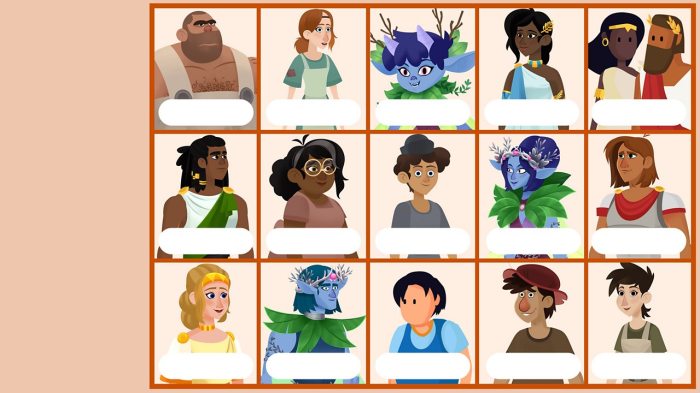A Midsummer Night’s Dream Monologue delves into the intricacies of Shakespeare’s beloved play, exploring the depths of its characters, themes, and the challenges and opportunities it presents for performers. This captivating analysis unravels the literary significance, character motivations, and the monologue’s impact on the overall narrative.
Through a comprehensive examination of the monologue’s structure, language, and rhetorical devices, this exploration uncovers the playwright’s intentions and the intended audience. It sheds light on the major themes explored, their development, and the social, cultural, and philosophical implications they carry.
Literary Context
A Midsummer Night’s Dream, a timeless masterpiece by William Shakespeare, holds significant historical and cultural relevance. Written around 1595-1596, it embodies the spirit of the Elizabethan era, reflecting the cultural fascination with fairies, mythology, and the transformative power of love.
Classified as a romantic comedy, the play explores universal themes of love, desire, and the human condition. Shakespeare employs various literary devices, including metaphors, similes, and puns, to create a vibrant and imaginative world that captivates audiences.
The playwright’s intention was to entertain and delight the courtly audience of Queen Elizabeth I. The play’s witty dialogue, enchanting characters, and elaborate stagecraft were designed to provide an immersive and unforgettable theatrical experience.
Character Analysis
Hermia
Hermia, a strong-willed and independent young woman, is deeply in love with Lysander. Her determination to defy her father’s wishes and marry Lysander drives the central conflict of the play.
Her language is passionate and assertive, reflecting her unwavering commitment to her love. She employs rhetorical strategies such as appeals to reason and emotion to persuade others to support her cause.
Helena
Helena, Hermia’s childhood friend, is secretly in love with Demetrius. Her unrequited love and desperate attempts to win his affection create a tragic subplot.
Helena’s language is often melancholic and self-pitying, expressing her inner turmoil and unfulfilled desire. Her use of imagery related to darkness and despair highlights her emotional state.
Monologue Structure and Form

The monologue spoken by Helena in Act I, Scene 1 is a soliloquy, a speech delivered by a single character to express their thoughts and feelings aloud.
The monologue is organized into three distinct sections: an introduction, a central argument, and a conclusion. Helena begins by establishing the situation and her unrequited love for Demetrius.
The central argument employs imagery of light and dark to contrast her love for Demetrius with Hermia’s seemingly effortless possession of his affections. Helena’s use of repetition and parallel structure emphasizes the depth of her despair.
The monologue concludes with a plea to the gods for intervention, reflecting Helena’s desperate hope for a change in her situation.
Thematic Analysis

Unrequited Love, A midsummer night’s dream monologue
The monologue explores the theme of unrequited love through Helena’s emotional journey. Her intense desire for Demetrius and his indifference create a poignant and relatable portrayal of the pain of unfulfilled longing.
Helena’s monologue contributes to the overall development of this theme by demonstrating the devastating effects of unrequited love on the human psyche. It highlights the psychological torment and emotional isolation that can accompany unfulfilled desire.
Performance and Interpretation
Challenges for Actors
Performing Helena’s monologue presents several challenges for actors. The emotional intensity and vulnerability of the character require actors to tap into their own emotional reserves.
Additionally, the monologue’s use of imagery and figurative language demands clear diction and precise articulation to convey the character’s thoughts and feelings effectively.
Interpretations
Different interpretations of Helena’s monologue can vary based on the actor’s approach and the director’s vision. Some interpretations emphasize Helena’s desperation and vulnerability, while others explore her strength and resilience.
The use of stagecraft, lighting, and sound effects can enhance the monologue’s impact. Dim lighting and evocative sound design can create an intimate and emotionally charged atmosphere, while subtle movements and gestures can convey Helena’s inner turmoil.
Comparative Analysis
Comparison with Hermia’s Monologue
Helena’s monologue can be compared to Hermia’s monologue in Act I, Scene 1, where she expresses her love for Lysander. Both monologues explore the theme of love, but they differ in tone and perspective.
Helena’s monologue is characterized by its melancholic and self-pitying tone, while Hermia’s is more assertive and passionate. This contrast reflects the different emotional states of the two characters and their respective experiences with love.
Essential Questionnaire: A Midsummer Night’s Dream Monologue
What is the significance of the monologue in A Midsummer Night’s Dream?
The monologue provides a window into the character’s inner thoughts and motivations, contributing to the play’s exploration of love, identity, and the transformative power of dreams.
How does the monologue reflect the play’s themes?
The monologue echoes the play’s themes of love, confusion, and the interplay between reality and illusion, highlighting the characters’ struggles with their emotions and desires.
What challenges do actors face when performing the monologue?
Actors must convey the character’s complex emotions, navigate the monologue’s shifts in tone, and find ways to connect with the audience through the language and imagery.